Before You Go. A very common, and very stupid, mistake is that New Mexico is part of Mexico. Not since the Treaty of Guadeloupe Hidalgo in 1848, it isn't. UNM is in Albuquerque, 268 miles from El Paso, Texas and the Mexican Border. NMSU is in Las Cruces, which is considerably closer: 44 miles. But that's still nearly an hour's drive north of the Border.
You do not need to bring a passport to visit either of these schools' campuses. (Campii?) Nor do you need to change your money, as they use American dollars. And while an ability to use a few Spanish phrases might help, a working knowledge of the language is hardly necessary.
New Mexico is mostly desert. In September, it's going to be hot. But by late October, the nights could be cool, and in November, actually cold. Be prepared.
New Mexico is in the Mountain Time Zone, 2 hours behind New York. (So is the El Paso region, the one part of Texas that's not in the Central Time Zone.) Adjust your timepieces accordingly.
Tickets. UNM averaged about 19,000 fans per home game last season, leaving their stadium only about half-full. NMSU did even worse: Last year's game between the teams was their only home game with more than 11,000 fans. Getting tickets will not be an issue.
At UNM, midfield seats cost $27 (bumped to $32 for the NMSU game), corner seats are $22 ($27), and general admission seats in the north end are $18 ($23).
At NMSU, most lower level seats are $15, and most upper level seats are $12.
Getting There. It's 1,995 miles from Times Square in New York to Albuquerque, and 2,125 miles to Las Cruces. Your first thought is going to be to fly. Well, you're not going to get a nonstop flight from the New York area to Albuquerque International Sunport ("Sunport"? That's what they call it), and you certainly aren't going to get one to Las Cruces. You'll have to change planes, probably in Denver or Dallas. But you might be able to get a round-trip flight for under $600.
You can leave New York's Penn Station on Amtrak's Lake Shore Limited at 3:40 PM on Wednesday, arrive at Union Station in Chicago at 9:45 AM on Thursday, leave on the Southwest Chief at 3:00 PM, and arrive in Albuquerque at 3:55 PM on Friday. Round-trip fare is $464. Greyhound costs $488, but it can drop to $366 on advanced purchase. Both Amtrak and Greyhound use the Alvarado Trannsporation Center, at 320 1st Street SW, at Silver Avenue.
Amtrak doesn't go to Las Cruces. Greyhound does, for $488, as little as $357 on advanced purchase. The station is at 800 Thorpe Road, at El Camino Real Road. Warning: There appears to be no public transportation in Las Cruces, so you're either going to have to rent a car, rent a bicycle, call for taxis, or do a lot of walking. It may not be worth it.
If you decide to drive, it's far enough that it will help to get someone to go with you and split the duties, and to trade off driving and sleeping. You'll need to get on the New Jersey Turnpike, and take Interstate 78 West across New Jersey, and at Harrisburg get on the Pennsylvania Turnpike, which at this point will be both I-70 and I-76. When the two Interstates split outside Pittsburgh, stay on I-70 west.
You'll cross the northern tip of West Virginia, and go all the way across Ohio (through Columbus), Indiana (through Indianapolis) and Illinois, and cross into Missouri over the new Stan Musial Veterans Memorial Bridge.
At St. Louis, switch to Interstate 44 West, which you'll use to cross Missouri, and into Oklahoma. When you get to Oklahoma City, switch to Interstate 40 West. You'll cross Western Oklahoma and the Texas Panhandle, and go into New Mexico to Albuquerque.
If you do it right, you should spend about an hour and 15 minutes in New Jersey, 5 hours in Pennsylvania, 15 minutes in West Virginia, 3 hours and 45 minutes in Ohio, 2 hours and 30 minutes in Indiana, 2 hours and 30 minutes in Illinois, 5 hours in Missouri, 5 and a half hours in Oklahoma, 3 hours in Texas, and 3 and a half hours in New Mexico. That's 32 hours and 15 minutes. Counting rest stops, you're looking at over 40 hours.
The best way to get from New York to Las Cruces is to use the directions for Albuquerque, and then turn south on Interstate 25, the Pan American Freeway, for nearly another 4 hours. So, we're talking about a total of 36 hours, maybe 41 hours with rest stops.
Once In the City. Obviously, New Mexico was named for Mexico. Gaining Statehood on January 6, 1912, it is home to about 2.1 million people, about 910,000 of whom live in the Albuquerque metropolitan area, and about 560,000 in the city proper.
Albuquerque, or "ABQ" for short, was named for the Dukes of Albuquerque, 2 of whom, father and son, both named Don Francisco, served as Viceroy of New Spain (including all the territory that would ever belong to Mexico, including California and the present-day American Southwest), the father from 1653 to 1660, the son from 1702 to 1710. In 1706, the son founded the city that bears the ducal name, which has stuck, long after history has recorded the father as a brutal suppressor of revolts in both North America and Europe, and long after Spain lost control of the region.
The much smaller Las Cruces is home to just under 100,000 people, was founded in 1849, and is supposedly named for 3 crosses that marked the graves of bandits on a hillside. It has been suggested that the name doesn't mean "the crosses," but "the crossroads," but, with Spanish being a gender-specific language, that would have made it the masculine form, Los Cruces.
The largest newspaper in the State is the Albuquerque Journal. The State capitol is Santa Fe, about 64 miles northeast of Albuquerque, and 285 miles north of Las Cruces. A fascinating city in its own right, Santa Fe can be reached by Amtrak or Greyhound. The sales tax in New Mexico is 5.125 percent. ZIP Codes start with the digits 87 and 88, with Albuquerque using 870, 871 and 875; and Las Cruces using 880.
The State House in Santa Fe
The old Atchison, Topeka & Santa Fe Railroad (long called just "The Santa Fe" for short) divides street addresses into East and West, and Central Avenue into North and South. The city runs a commuter rail system called the New Mexico Rail Runner Express, and the ABQ Ride bus system, on which a single ride is $1.00. There is no freeway "beltway."
New Mexico Rail Runner Express, with its roadrunner logo,
at the Alvarado Transportation Center
Notable UNM graduates include:
* Sports other than Football: Basketball players Michael Cooper '78 and Luc Longley '91 and baseball player Scott Strickland '98.
* Literature: Edward Abbey '51, Rudolfo Anaya '63, historian Thomas Madden '86, historian Brian Jay Jones '89.
* Politics, representing New Mexico unless otherwise stated: Secretary of Education Shirley Hufstedler '45, Governor Bruce King '48, Governor Jerry Apodaca '53, Senator Pete Domenici '54, Governor Gary Johnson '75.
There aren't many notable NMSU graduates. The biggest one is probably the current CEO of Starbucks, Kevin Johnson.
Going In. The University of New Mexico was founded in 1880, 32 years before Statehood. Its teams are called the Lobos, Spanish for Wolves.
On May 3 of this year, Dreamstyle Remodeling, an Albuquerque-based construction business, bought the naming rights to both University Stadium and University Arena, renaming them Dreamstyle Stadium and Dreamstyle Arena.
Dreamstyle Stadium is at 1414 University Blvd., about 2 miles southeast of downtown. Bus 36. Built in 1960, it replaced Zimmerman Field, a 16,000-seat stadium that was just south of the current Zimmerman Library -- almost making UNM what Rutgers is, a rare school that tore down a football stadium to build a library.
The 39,224-seat stadium has a horseshoe shape, open at the south end. The grass field was replaced with FieldTurf in 2012. Since 2006, it has hosted the New Mexico Bowl. It also hosted a 2005 friendly between the U.S. men's soccer team and Honduras, a 2004 qualifying match for the 2007 Women's World Cup between the U.S. and Mexico, and concerts by bands as big as the Rolling Stones, Led Zeppelin and Metallica.
UPDATE: On November 19, 2018, Moneywise compiled a list of their Worst College Football Stadiums, the bottom 19 percent of college football, 25 out of 129. Dreamstyle Stadium came in at Number 25. They cited the fact that the stadium has only bench seats, no actual chairs, and suggested that there's not much atmosphere, but also that there are some nice sunsets.
Las Cruces College was founded in 1888, 24 years before Statehood. The next year, it was renamed the New Mexico College of Agriculture and Mechanic Arts, or "New Mexico A&M." Like a lot of current and former "A&M" schools, its teams are called the Aggies. And it is one of a few of them (Oklahoma's and Mississippi's included) to go from being an A&M to a "State University," taking on the name New Mexico State University in 1960.
Aggie Memorial Stadium is at 1810 E. University Avenue, on the opposite side of Las Cruces, 9 miles south of the bus station, and 4 miles south of downtown. It opened in 1978, with a field that runs north-to-south, and artificial turf. It seats 30,343, but is rarely fille.
Food. Levy Restaurants runs the concessions at Dreamstyle Stadium. Both there and at Aggie Memorial Stadium, don't expect to find fancy stuff, although Mexican and Tex-Mex food being available wouldn't be surprising. Regardless, at both places, you're probably better off eating both before and after the game.
Team History Displays. UNM won the Border Conference in 1938; the Western Athletic Conference in 1962, 1963 and 1964; the Mountain Division of the WAC in 1997; and the Mountain Division of the Mountain West Conference last year, under Bob Davie, formerly head coach at Notre Dame.
They've never been in a major bowl game, didn't get invited to a bowl between 1961 and 1997, and didn't win a bowl between 1961 and 2007. But they did win the Sun Bowl in 1946 (beating Utah), the Aviation Bowl in 1961 (Western Michigan), and the New Mexico Bowl in 2007 (Nevada) and 2016 (Texas-San Antonio).
UNM doesn't retire uniform numbers. Notable players include running back Don Perkins (a 6-time Pro Bowler and a member of the Dallas Cowboys' Ring of Honor), defensive end Paul Smith (a 2-time Pro Bowler, played in a Super Bowl with the Denver Broncos), receiver Terance Mathis (receiver for the Jets, reached a Pro Bowl and played in a Super Bowl with the Atlanta Falcons), receiver Hank Baskett (played in a Super Bowl with the Indianapolis Colts, but probably now better known as the husband of reality-TV star Kendra Wilkinson), and, probably the best one they've had, linebacker Brian Urlacher (an 8-time Pro Bowler with the Chicago Bears, and a probably future Hall-of-Famer).
New Mexico A&M (now State) played in the inaugural Sun Bowl in nearby El Paso in 1936, playing Hardin-Simmons University of Abilene, Texas to a 14-14 tie. They returned to the Sun Bowl in 1959, beating North Texas; and 1960, beating Utah State. But they haven't been to a bowl game since, making this -- pardon the desert-themed pun -- the longest drought in NCAA FBS (Football Bowl Subdivision, what used to be called Division I-A).
They won the Border Intercollegiate Athletic Association title in 1938 and 1960, and the Missouri Valley Conference in 1976 and 1978. They now belong to the Sun Belt Conference. Their most notable former player is Charley Johnson, a quarterback with the St. Louis Cardinals, Houston Oilers and Denver Broncos in the 1960s and '70s.
The UNM-NMSU rivalry is described as "spirited." They've played each other since 1894, 18 years before Statehood, and Lobos lead it, 65-31-5. UNM also had a rough rivalry with the University of Arizona, but they stopped playing annually after the 1990 season, and now rarely play each other. NMSU's other major rival is the University of Texas at El Paso (UTEP).
UPDATE: Through the 2019 season, UNM now leads NMSU 67-31-5.
Stuff. Neither school has a big team store inside the stadium. You're better off going to the University Bookstores: UNM, at 2301 Central Avenue NE, at Cornell Street; and NMSU, at 1713 E. University Avenue, at Locust Street.
During the Game. You're a visitor, but not rooting for the visiting team. Your safety will not be an issue.
Both schools put their student sections on the east side of the stadium. The Lobos' mascot is a gray wolf named Lobo Louie, but, like Harvey the Hound at Calgary Flames games, he looks very silly with his tongue hanging out.
NMSU's slogan is "Aggie Up!" They use a cowboy, rather than a farmer as you might expect, as their "Aggie" mascot. And not just any cowboy: The costume, complete with fake mustache, is supposed resemble Frank Eaton, who was nicknamed Pistol Pete, and whose nickname would later descend on athletes Harold "Pete" Reiser and Pete Maravich. And so, NMSU's mascot is named Pistol Pete. Eaton also inspired the Cowboys mascots of Oklahoma State and the University of Wyoming.
After the Game. Assuming you didn't go out of your way to make a nuisance of yourself during the game, you will be safe on your way out.
There's not a lot of restaurants around the UNM athletic complex. You may need to go back to downtown Albuquerque.
International soccer isn't all that popular in New Mexico. Two Fools Tavern is the leading "football pub" in the State, at 3211 Central Avenue NE, about 3 miles east of downtown Albuquerque. Bus 66.
Sidelights. Dreamstyle Arena, formerly University Arena, is to the west of the Stadium, at 1111 University Blvd. SE. Most of it is below ground level, and so it is nicknamed The Pit.
The 15,411-seat arena opened in 1966, is one of the loudest venues in college basketball, and is best known as the site of the 1983 NCAA Final Four, won by North Carolina State in a big upset over the University of Houston.
Isotopes Park is to the north of the stadium, at 1601 Avenida Cesar Chavez SE. (The legendary union leader once sold concessions at UNM's old stadium.) It was built on the site of the 10,500-seat Albuquerque Sports Stadium, which stood from 1969 to 2000.
Albuquerque Sports Stadium, with a pre-expanded
University Stadium in the background
The Albuquerque Dukes, doubly named for the city's founder, played from 1942 to 2000, winning Pennants in the West Texas-New Mexico League in 1949, 1950 and 1953; and, as the top farm team of the Los Angeles Dodgers, the Pacific Coast League in 1972, 1978, 1980, 1981, 1982, 1987, 1990 and 1994.
The new, 13,500-seat ballpark opened in 2003, as the home of the PCL's Albuquerque Isotopes, reflecting New Mexico's connection with nuclear power, but also as a tip of the cap to the Springfield Isotopes, the fictional team on The Simpsons. The 'Topes have won Division titles in 2003, 2009 and 2012, but, so far, no Pennants. So that's 11 Pennants for the city, but none since 1994.
Isotopes Park, with the Stadium and the Pit behind it
Until the mid-20th Century, Las Vegas, New Mexico had more people than Las Vegas, Nevada. LVNM hosted a Heavyweight Championship fight on July 4, 1912. Jack Johnson defended the title by beating Jim Flynn, when "the Fighting Fireman" was disqualified for head-butting the 1st black Heavyweight Champion. The stadium appears to have been a temporary one, with little record as to where it was. Las Vegas is 123 miles northeast of Albuquerque, and 67 miles east of Santa Fe.
Although he grew up in the Los Angeles suburbs, Pittsburgh Pirates slugger and Mets broadcaster Ralph Kiner is the all-time greatest athlete to have been born in New Mexico. He is buried at Greenlawn Cemetery, 1606 N. Dustin Avenue in Farmington, but that's 180 miles northwest of Albuquerque, near the "Four Corners," where New Mexico, Arizona, Utah and Colorado come together.
The New Mexico Museum of Natural History and Science is at 1801 Mountain Road NW. Bus 66. The National Hispanic Cultural Center is at 1701 4th Street SW. Bus 53. The Indian Pueblo Cultural Center is at 2401 12th Street NW. Bus 36. And ABQ BioPark Aquarium is at 2601 Central Avenue NW. Bus 66.
Before Breaking Bad, the most famous building in the State of New Mexico was the Norman Petty Recording Studio, home to Buddy Holly & the Crickets. 1313 W. 7th Street, in Clovis, 220 miles east of Albquerque, and 100 miles northwest of Holly's hometown, Lubbock, Texas.
Speaking of rock and roll, The Beatles never performed in New Mexico, but Elvis Presley did, mostly early in his career, when the North hadn't heard of him yet. He did an afternoon concert at the Sports Arena in Carlsbad (282 miles southeast of Albuquerque) on February 11, 1955, and then, that night, he did another show at the American Legion Hall in Hobbs, 70 miles to the east, on the Texas State Line.
The next day, he returned to Carlsbad for another show, at the Legion Hut. Two days after that, he played 2 shows at the North Junior High School Auditorium in Roswell, 200 miles southeast of Albuquerque. On April 27, 1955, he went back to the American Legion Hall in Hobbs.
He did 3 shows in Albuquerque. On April 12, 1956, he did 2 shows at the Armory (now demolished), at 5th Street and Silver Avenue, downtown. On April 19, 1972, he played Tingley Coliseum, at 300 San Pedro Drive NE, next to the Albuquerque Downs racetrack, 2 miles east of downtown. Bus 11. This 9,286-seat arena has hosted minor-league hockey, although it is mainly now used for concerts.
New Mexico has never produced a President, or a Vice President. The closest it's come is Bill Richardson, former Congressman, Governor, Secretary of Energy, and U.S. Ambassador to the United Nations, who ran for President in 2008.
The tallest building in New Mexico is the Albququerque Plaza Office Tower, at 201 3rd Street NW, downtown, just 351 feet tall.
The only well-known TV shows set, or filmed, in Albuquerque are Breaking Bad and its spinoff Better Call Saul. The house used as Walter White's residence is at 3828 Piermont Drive NE, about 6 miles northeast of downtown. Bus 8. It remains a private residence, so don't bother anyone, and especially don't throw a pizza on the roof. Seriously: The owner has publicly complained about people throwing pizzas onto his roof, like Walter did.
Most of the films set, and shot, in New Mexico have been Westerns, many of them involving outlaw Henry McCarty, a.k.a. William H. Bonney, a.k.a. Billy the Kid: The Outlaw, The Left Handed Gun, Pat Garrett and Billy the Kid, Young Guns. (Billy, the 1880 equivalent of a hitman, was actually righthanded, the misperception based on a reversed photograph of him, and probably killed no more than 4 men.)
Sergio Leone and Clint Eastwood filmed the Man With No Name Trilogy (For a Fistful of Dollars, For a Few Dollars More, and The Good, the Bad, and the Ugly) in New Mexico. Films about the alleged UFO crash in Roswell have been filmed nearby, although the alien-themed TV show Roswell was filmed in Southern California. And the High School Musical films were set at East High School in Albuquerque.
*
New Mexico doesn't have a lot of people, but its interest far exceeds that. And a football or basketball game at the University of Mexico can be a fun experience.
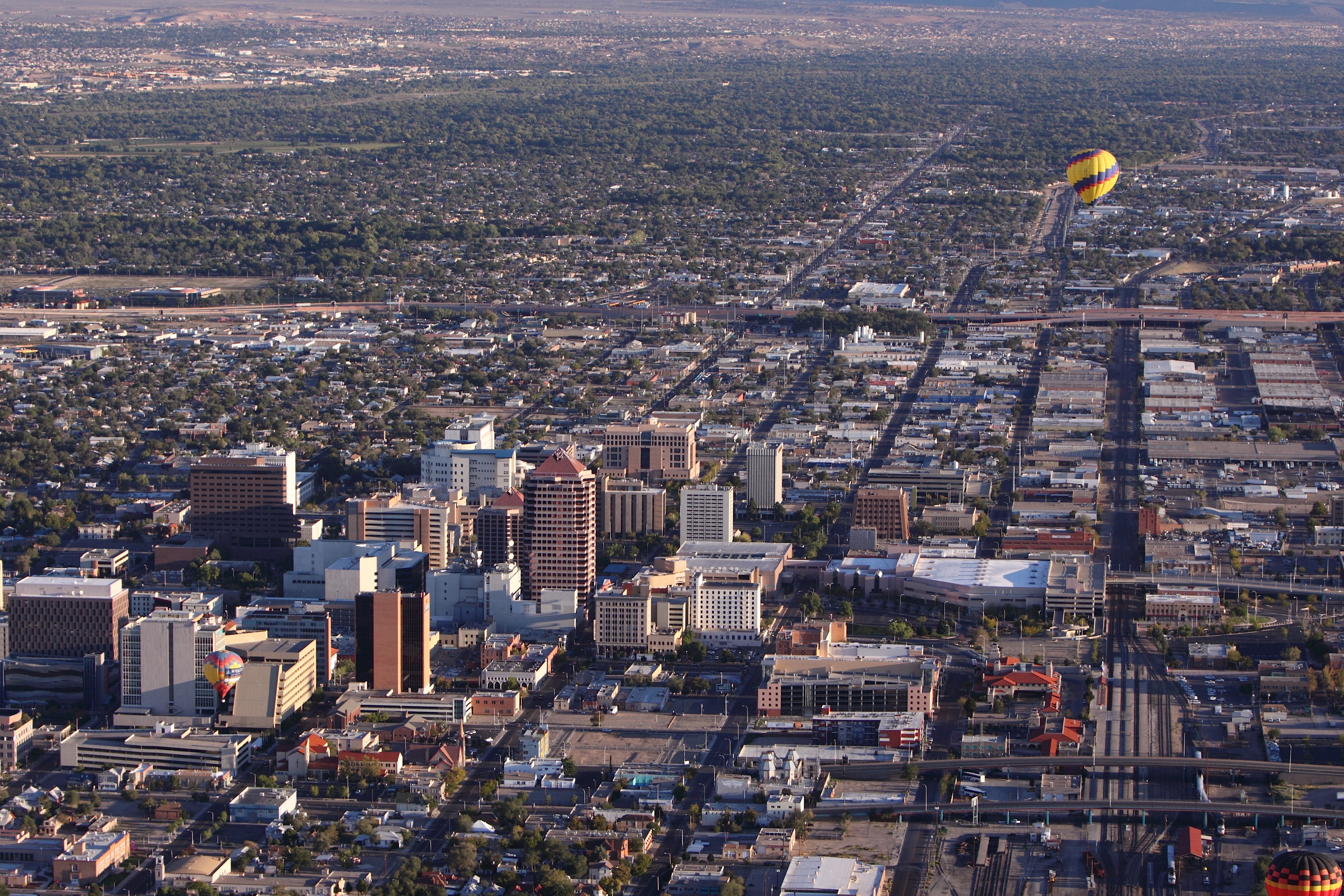


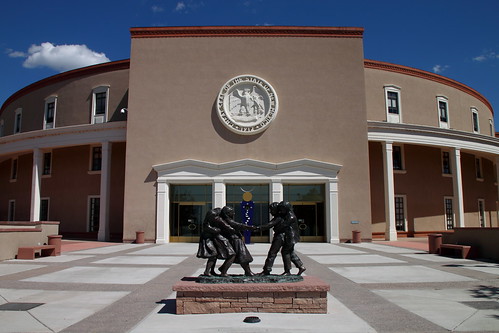

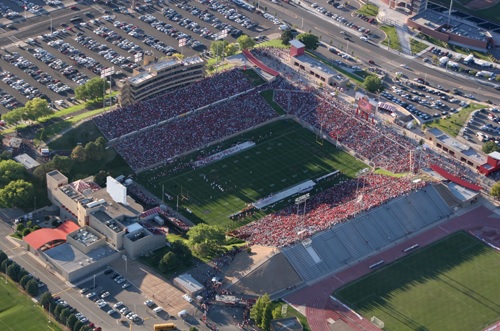


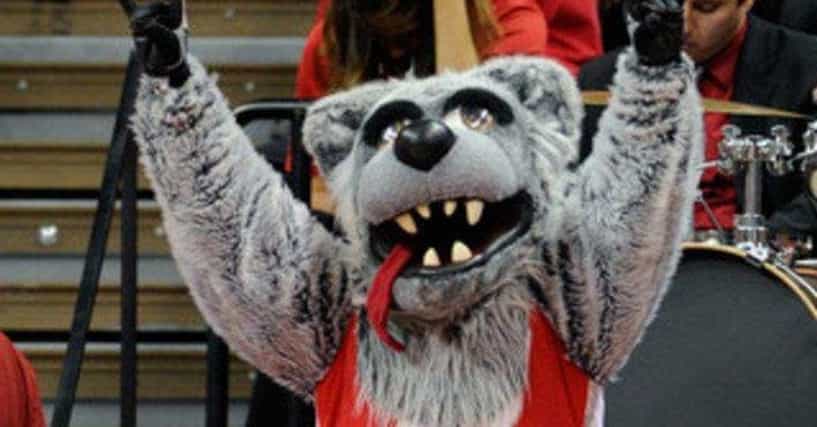


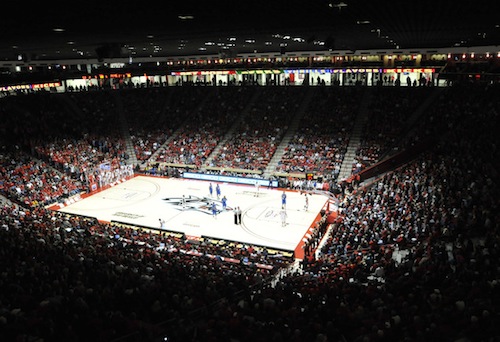
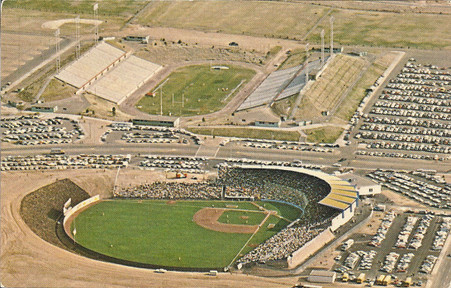
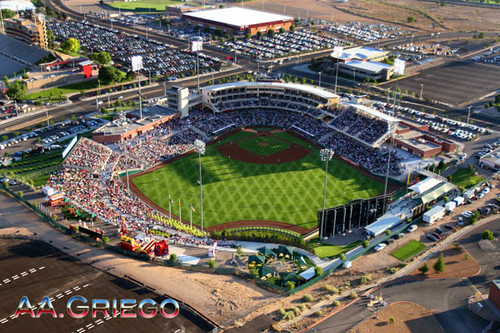

No comments:
Post a Comment